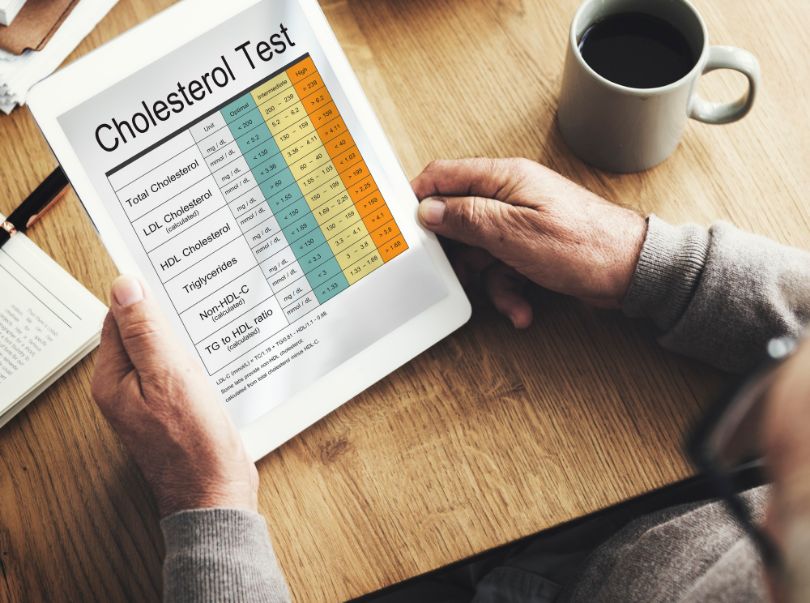Cholesterol is a fat-like substance that is found in your body’s cells. It’s necessary to produce hormones, Vitamin D, and other substances that help you digest food. Your body already produces an adequate amount to function, but cholesterol is also found in the foods we eat.
It travels through the body through the bloodstream in clusters called lipoproteins, which are both fat and protein. Low-density lipoproteins (LDL) are referred to as “bad” cholesterol. A high LDL level contributes to the build-up of bad cholesterol in the arteries.
The “good” cholesterol is called HDL, which stands for high-density lipoproteins. It is considered good because it carries cholesterol from other parts of the body back to the liver, where your body gets rid of it.
What Happens During a Test?
During your tests, four things are checked: your total cholesterol, your LDL (“bad”), HDL (“good”), and triglycerides. In the United States, cholesterol is measured using milligrams (mg) of cholesterol per deciliter (dL) of blood. In Canada and Europe, it is measured using millimoles (mmol) per liter (L) of blood.
High Cholesterol Numbers (Total)
In order for your total cholesterol to be considered high, the measurement would be 240mg/dL and above if you live in the United States. In Canada and Europe, a high level would be considered to be 6.2 mmol/L.
LDL (“bad”) Cholesterol
If you live in the United States, a high LDL level would be considered 160-189 mg/dL. In Canada and Europe, high LDL would be considered 4.1 – 4.9 mmol/L.
HDL (“good”) Cholesterol
In order for your HDL (“good”) levels to be considered “best”, in the United States, they would need to be 60 mg/dL and above. If you live in Canada or Europe, the best levels would be considered 1.5 mmol/L and above.
Risk Factors
High levels may put different people at different risks, depending upon several factors. One of the main factors is if you’ve had a previous heart attack or stroke. Other factors include artery blockages in your neck (carotid artery disease), and artery blockages in your arms or legs (peripheral artery disease).
Other risk factors that may place you in the “high-risk” group are:
- Smoking
- Low HDL
- High blood pressure
- Diabetes
- Family history of heart disease
- For women, if you are older than age 55; for men, if you are older than 45
- Elevated lipoprotein (a), is another type of fat in your blood.
To lower your risk factor for cholesterol-related conditions, eat a healthy diet, exercise, make lifestyle changes, and take your medications as prescribed. A check should be performed every five years for adults.
Also Read
Learn About Statins and the Way It Controls Cholesterol
Get the Facts About Buying Canadian Drugs Online.







